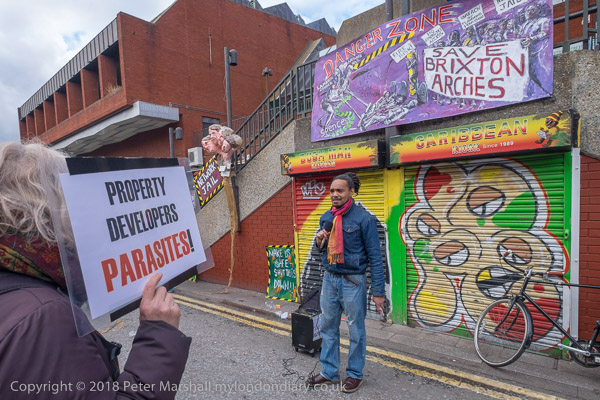
Back when I began taking pictures of London in the 1970s London still had many largely working class areas, many the kind of places where some photographer friends would raise an eyebrow when I said I had been taking pictures there, or even send me dire warnings about the dangers of walking the streets there with a camera around my neck.

They were areas where people in the basic jobs that keep the city running could afford to live – both those whose families had moved to these areas several generations back and those including migrants and refugees who had come more recently. Some were certainly beginning to see a new more affluent population moving in, and many of my pictures featured skips in front of housing that was being renovated, both by developers who were buying up many older properties and young professional couples who were often ‘knocking through’, and pub conversations began to be riddled with terms such as ‘RSJ’.
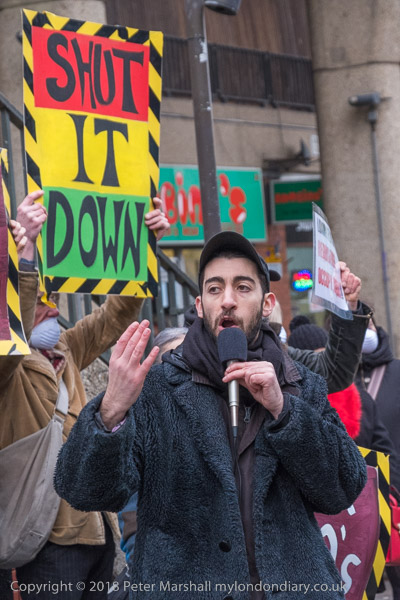
Since then more and more areas across London have been subject to ‘gentrification’, their character being changed and new businesses coming in to cater for the new wealthier population, while increasingly the low-income inhabitants are forced out to cheaper areas further from central London as house prices and flat rents soar – and as council estates are demolished and replaced by higher density largely private flats at high market rents.
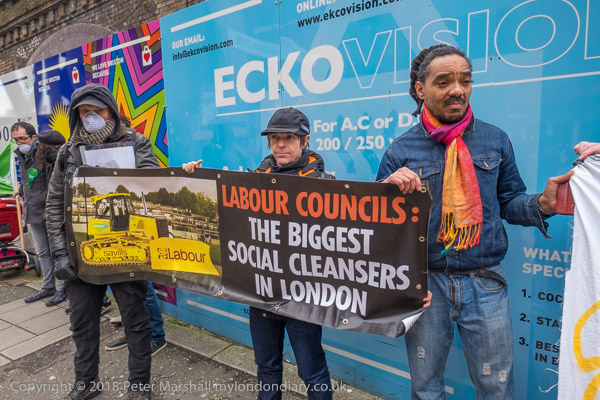
This process of ‘social cleansing’ has been taking place across London, and has been accelerated by many Labour councils since Tony Blair began New Labour’s regeneration programme with a press photo-opportunity on the Aylesbury Estate in Southwark in his first speech as Prime Minister in 1977.
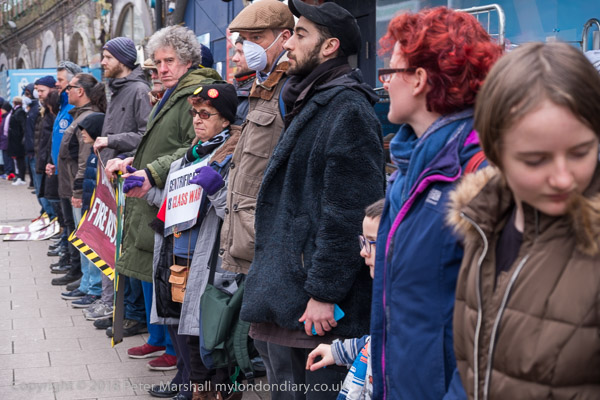
Many of the shops that I photographed back in the 70s and 80s, small local shops – corner stores, cobblers, hairdressers, greengrocers, butchers, etc – and other small local businesses have now disappeared, their premises now often estate agents, and cafés have changed their nature from ‘greasy spoons’ where you could get a filling cheap lunch to serving coffee and cakes, vegetarian food or rather more expensive restaurants catering for the new and wealthier clientèle. Of course tastes generally have changed and so have shopping habits, and some of the new is certainly welcome. But so much of those shops and pubs that were a part of these neighbourhoods have been lost.
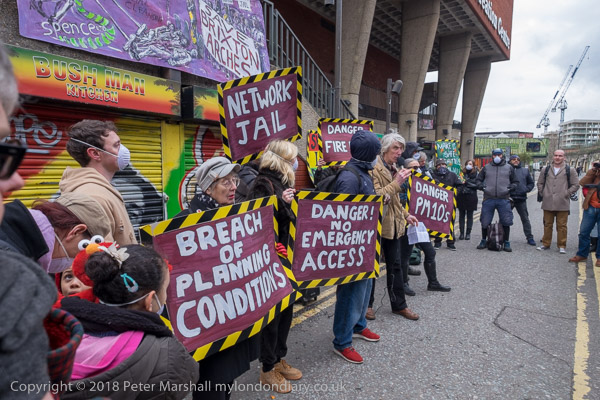
Brixton perhaps stood out against gentrification longer than most – with the reputation it had from the disturbances in 1981, 1985 and 1995 deterring many newcomers. All took place following heavy-handed police action; Operation Swamp 81, when over 900 people were stopped and searched in 5 days, with 82 arrested, the shooting of Cherry Groce in 1985, and the death in police custody of Wayne Douglas in 1995. But many young people were attracted to the area by the vibrant atmosphere and Caribbean culture, by music venues, the Roxy, markets, food and pubs, and with its good transport links and closeness to central London it has attracted many young professionals in more recent years.
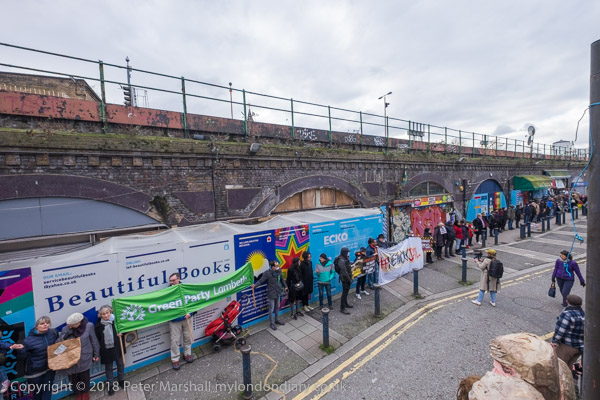
Railway lines run through the centre of Brixton, and the arches underneath them have been an important part of its life, providing low cost premises for businesses and, particularly in Atlantic Road and Brixton Market Road, for shops. They provided what has been called “the heart of Brixton”. But as I wrote in my text for Save Brixton Arches: 3rd Anniversary Action on Sunday 4th February 2018:
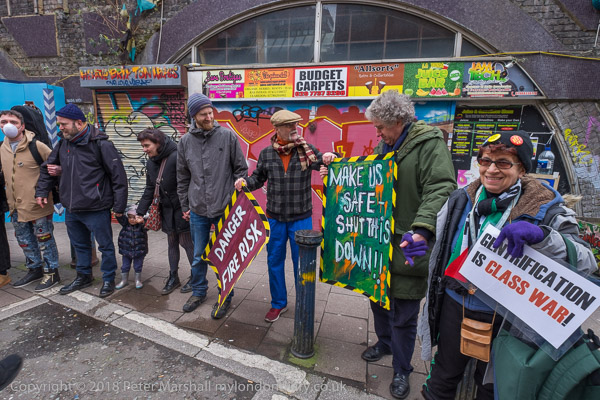
Network Rail have colluded with Lambeth Council to get rid of something that gave Brixton its unique character and replace it by trendier shops catering for the new wealthy young population – part of Lambeth Labour’s programme of social cleansing which includes demolishing council estates and replacing them with high cost private accommodation (with a token amount of so-called affordable properties.) The Council ignored the public outcry and large demonstrations to keep the arches.
The plans were accompanied by a great deal of lies and mismanagement by Network Rail and work was supposed to be completed by 2016 but is only scheduled to start tomorrow, and the Save Brixton Arches campaign are calling for it to be abandoned as the plans for the work fail to include proper fire safety precautions and will severely restrict access by emergency services to local businesses and the railway and station.
Save Brixton Arches: 3rd Anniversary Action
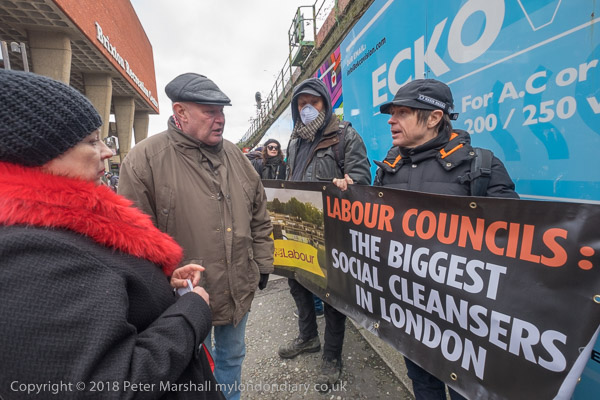
Despite the campaign both by the traders and many of the local population the refurbishment of the arches went ahead, though over a year later many had not been re-let. Allies and Morrison, the architecture and urban planning practice which recommended the scheme in 2013 has been involved in many contentious ‘regeneration’ schemes with developers and councils across London which opponents describe as social cleansing. Local Labour MP Helen Hayes was a senior partner in this firm until she left shortly before being elected in 2015, although she has denied any involvement in this particular scheme.
More at Save Brixton Arches: 3rd Anniversary Action.
All photographs on this and my other sites, unless otherwise stated, are taken by and copyright of Peter Marshall, and are available for reproduction or can be bought as prints.
Tags: anniversary, Brixton, Brixton Arches, Class War, gentrification, Lambeth Council, London, Network Rail, protest, social cleansing